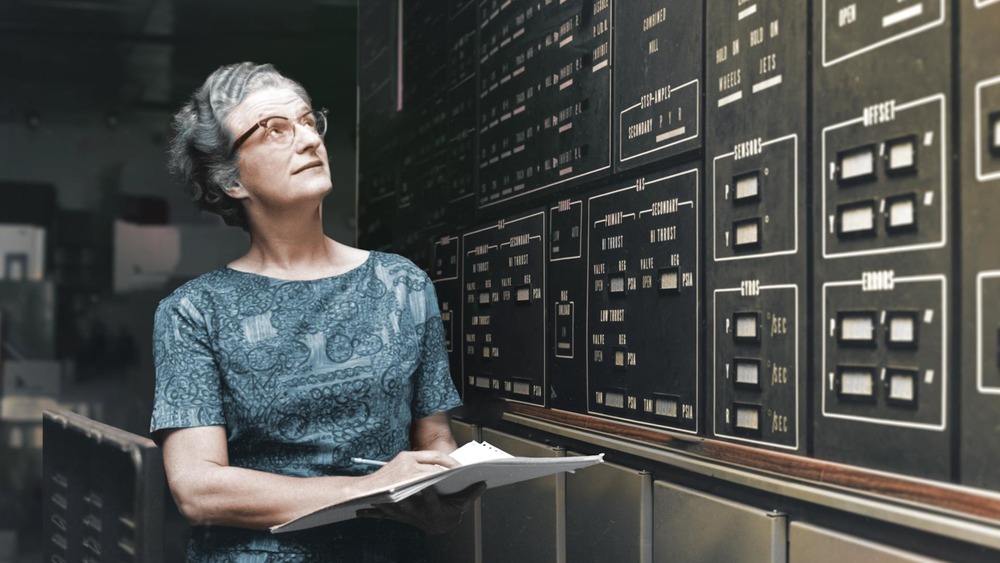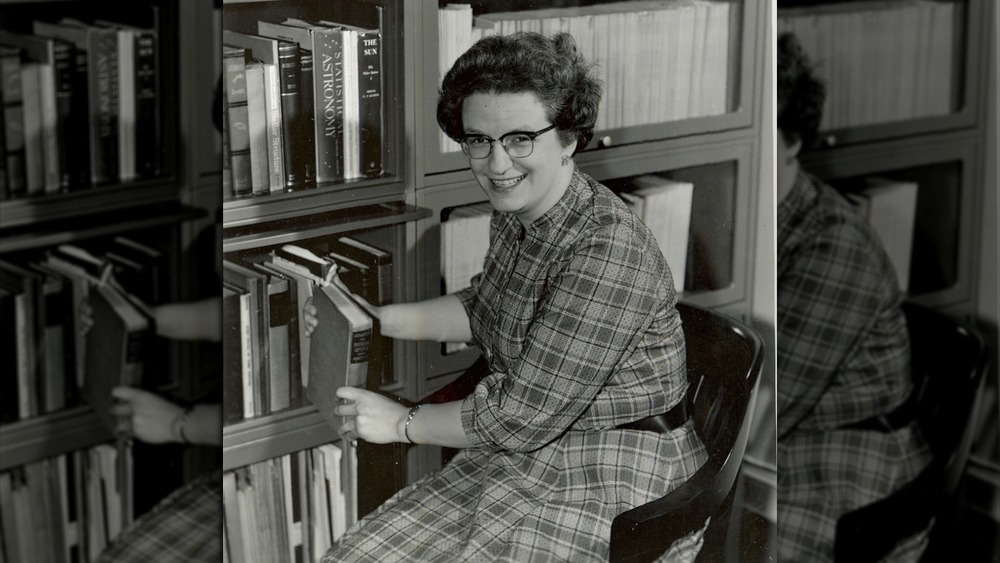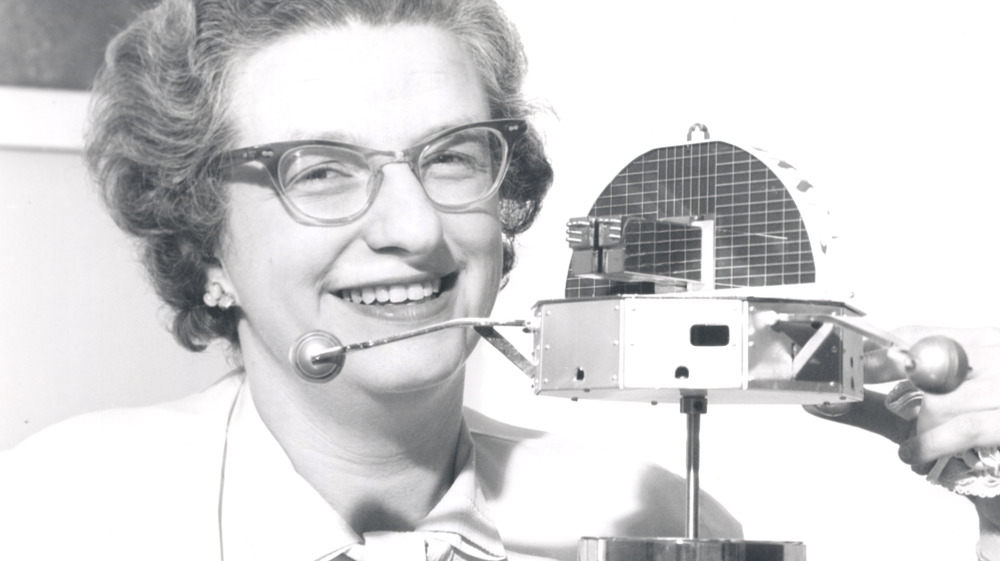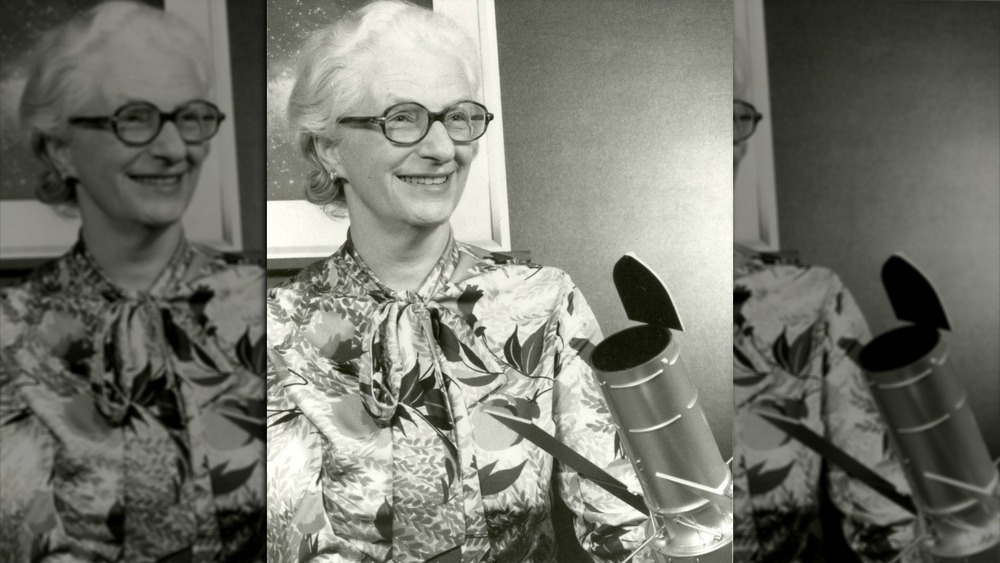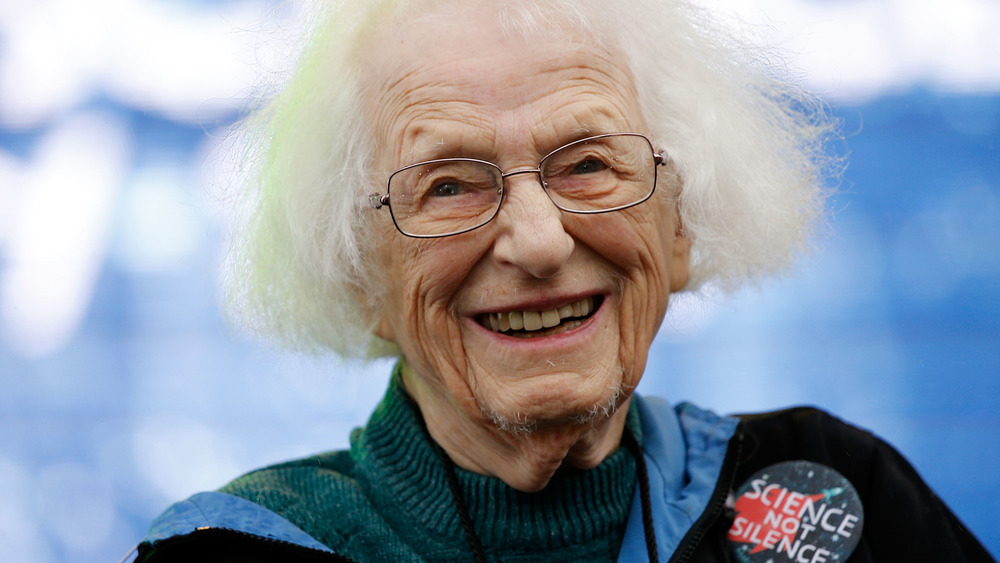The Truth About The 'Mother' Of The Hubble Telescope
You're no doubt familiar with the Hubble Space Telescope. According to NASA, the Hubble telescope was first launched in 1990, and has enabled humanity to acquire some of our most high-precision images of outer space. The Hubble is huge — 43.5 feet long to be precise, or about the size of a school bus. Since 1990, the Hubble has made over 1.3 million observations and has been referenced in over 15,000 published papers, making it "one of the most productive scientific instruments ever built."
These are awesome statistics, but probably not super surprising; the Hubble telescope is widely admired and celebrated. But what do you know about the history of the Hubble's creation? Unless you're a true space nerd, there's a good chance you've never even heard of Nancy Grace Roman — the "Mother" of the Hubble telescope.
Per a 1980 interview with the American Institute of Physics, Nancy Roman was born in Nashville, Tennessee in 1925. Her father was a professional physicist; as a result of his research, Nancy's family was constantly on the move. By high school, Roman was convinced that she wanted to pursue a career similar to her father's: that of an astronomer. At age 11, Nancy established an astronomy club at her school in Reno, Nevada.
Despite obstacles, Nancy Grace Roman became a leading astronomer
From her early interest in astronomy, Roman would go on to receive a PhD in Astronomy from the University of Chicago in 1949. But getting a formal education in astronomy was no easy task for Roman; she received constant pushback from professors who believed that women had no place in the sciences. Per UChicago Magazine, that included the (female) dean of Roman's college, who told Roman that "If [she] insisted on majoring in science or engineering," the dean "wouldn't have anything more to do with [her]."
But Dr. Roman pushed on. In the 1950s, she wrote a variety of highly influential astronomy papers. Topics ranged from the structure of the Milky Way to the speed of various stars. Dr. Roman's groundbreaking research quickly elevated her to a high position within the scientific community. According to the University of Missouri-Kansas City, Dr. Roman was the first U.S. civilian to be invited to visit the Soviet Union after the start of the Cold War — in 1956, Soviet officials invited her to speak about her astronomical work.
Having access to the best equipment was very important to Dr. Roman. She turned down two university research positions because she felt they lacked high-quality instruments, per her 1980 interview with the American Institute of Physics. In the late 1950s, when the newly-founded National Aeronautics and Space Administration (NASA) approached Nancy Roman for help establishing a space astronomy program, she jumped at the opportunity.
Dr. Roman was appointed NASA's first Chief of Astronomy
Dr. Roman joined NASA in 1959, and was quickly appointed "Chief of Astronomy." Per NASA's website, Dr. Roman was the first person to hold that position, as well as the first woman to hold any executive office at NASA. You might expect that NASA would be a great place for a professional astronomer, but that wasn't exactly the case in the 1960s. At the time, the agency was far more focused on human spaceflight than observing the stars. Dr. Roman hoped to change that.
Dr. Roman was excited by NASA's rockets. She realized that they offered astronomers a brand new opportunity: the chance to launch a telescope into space. Dr. Roman realized that such a telescope could be far more powerful than the existing land-based telescopes, and (per a brief paper she wrote in 1959) she believed that a space telescope may even allow humans to detect planets in other parts of the galaxy. Dr. Roman's idea was controversial; the study of space had been conducted from the ground since the era of Galileo, so astronomers were hesitant to support a space-based telescope. She sought to shift that stance through a series of lectures in astronomy departments across the country. Per her 1980 interview, these visits allowed Dr. Roman "to tell [astronomers] what we were planning at NASA," but also "to get from them a feeling of what they thought NASA ought to be doing."
Dr. Roman earned the title 'Mother of Hubble'
Once the astronomical community was on board, Dr. Roman oversaw the creation of a series of small astronomy satellites at NASA throughout the 1970s. When these were successful, she began to speak in favor of a Large Space Telescope — the project that would eventually result in the Hubble. Other scientists had argued in favor of an orbital telescope with a 3-meter mirror before Dr. Roman, but she knew that it was best to wait for smaller telescopes to prove that a larger one might work.
Per the Hubble website, the National Academy of Scientists published a study in 1969 approving NASA's vision for a 3-meter orbital telescope. In 1971, Dr. Roman established a Science Steering Group for NASA's Large Space Telescope, staffed by engineers and astronomers from across the country. Then came the hard part: funding from Congress. According to an interview with the Annual Review of Astronomy and Astrophysics, Dr. Roman "wrote congressional testimony over 10 years to justify the LST."
As a result of these efforts, Dr. Roman is now remembered as the "Mother" of the Hubble telescope — a title initially given to her by fellow astronomer Edward Weiler. "This... is often forgotten by our younger generation of astronomers who make their careers by using the Hubble Space Telescope," Weiler said, posted on the website of the Space Telescope Science Institute. "It was Nancy... who really helped to sell the Hubble Space Telescope, organize the astronomers, who eventually convinced Congress to fund it."
NASA continues to honor Dr. Roman's contributions to astronomy
Unfortunately, by the time NASA was able to construct the Large Space Telescope (then called the Hubble Space Telescope), Dr. Roman had already departed from the agency. Per her interview with the Annual Review of Astronomy, Dr. Roman took an early retirement opportunity in 1979, partly to take care of her elderly mother. But Roman remained active in astronomy in a variety of ways for many years after that. Per NASA, Dr. Roman would go on to spend some time as a teacher, and would later help produce audio recordings of astronomical textbooks for the blind and dyslexic.
Thankfully, Dr. Roman lived on for quite some time, and was able to witness the tremendous utility of the Hubble telescope for several decades after its 1990 launch; per The Washington Post, Dr. Roman died in 2018 at the age of 93. Today, she continues to be remembered as the mother of the Hubble telescope, even though she rejected that title during her lifetime.
In May of 2020, NASA administrator Jim Brendenstine announced that NASA's upcoming Wide Field Infrared Survey Telescope would be renamed the Nancy Grace Roman Space Telescope to honor the scientist's contributions to astronomy. The Roman Space Telescope is scheduled for launch in 2025; per NASA, it will have a similar resolution to the Hubble, but will be able to photograph 100 times as much area due to a far greater field of view.
